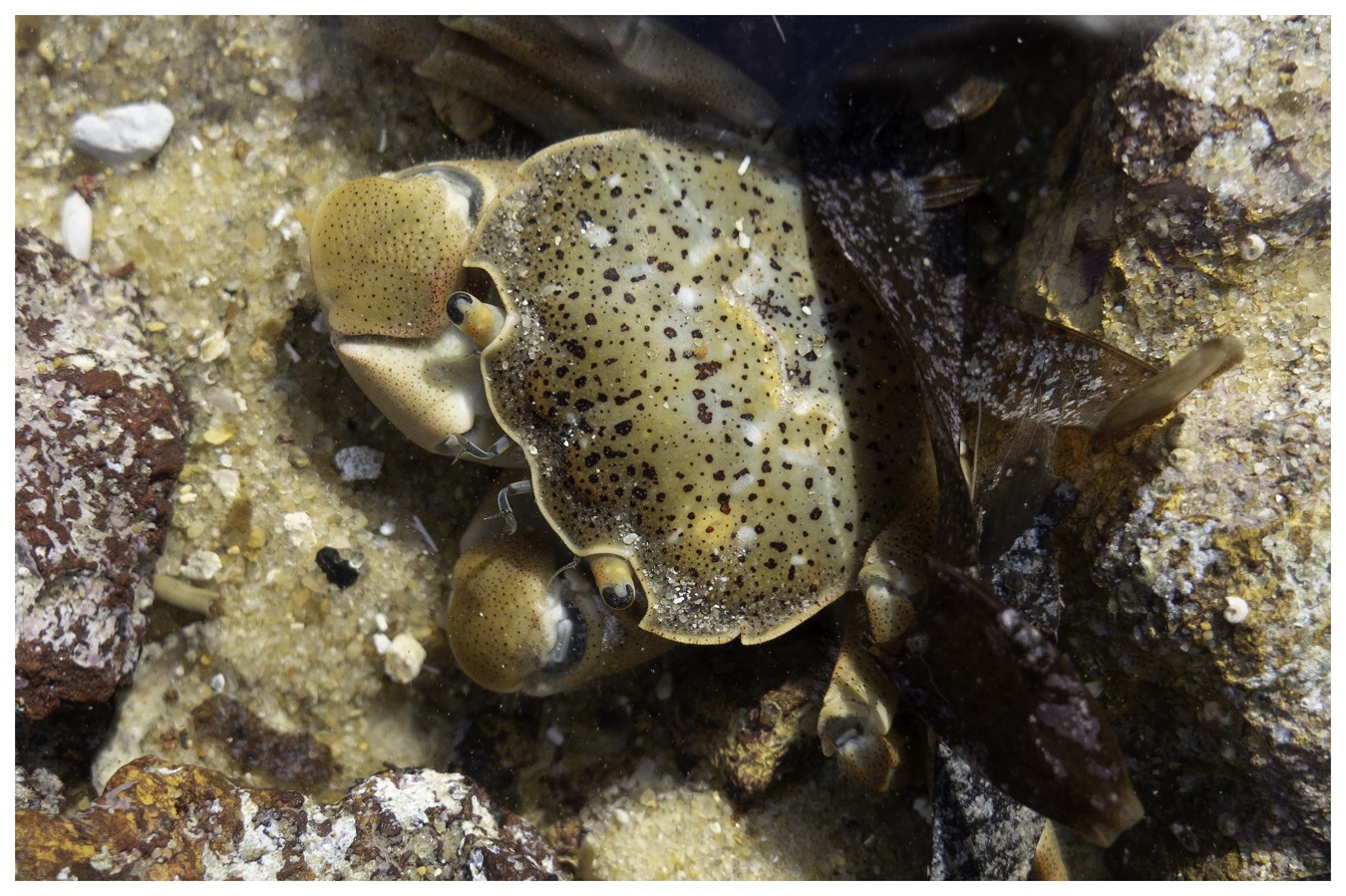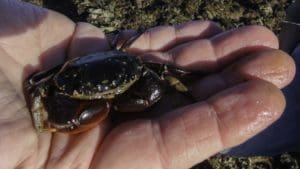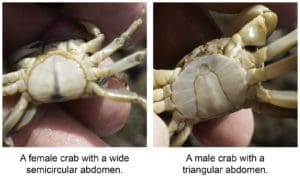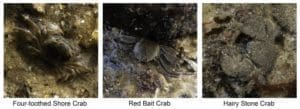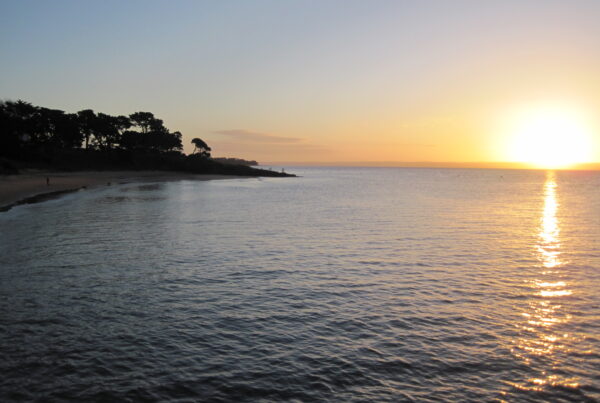I would be surprised if you did not know this was a crab! You may recognize this as a shore crab which is common to Victorian rocky beaches.
When we take students to the beach it is the crabs that generate the most emotion, from screams, to “it is going to nip me”, to the pure excitement of finding them under rocks. To the surprise of students, a crab sitting on their hand does not attack them, instead, it tickles them as it walks about.
So, what is a crab? If you hold a crab, the first thing you notice is that it has a hard body with its legs tucked underneath. It has ten legs with the first two ending in their claws. They look at you with two compound eyes, which in some crabs are extended on stalks above their bodies. If the crab walks across your hand it will do so sideways. Crabs you find at the beach breathe using gills, so don’t hold onto your crab for too long, put it back in the water or back under the rock where you found it.
All crabs have their skeleton on the outside of their body, called an exoskeleton. The rigid, hard exoskeleton is great for survival but restricts the growth of the crab. A crab cannot grow any bigger than the size of its exoskeleton. To grow, a crab must shed its exoskeleton and grow a new one, in a process called moulting. You may have found a crab body on the beach but there is not a crab inside, this is a discarded exoskeleton.
If you turn a crab over and look at its underside you will see a small flap, this is the crab’s abdomen and its shape that tells you if the crab is male or female. A male crab will have a pointed triangular shaped abdomen while a female has a wider, semicircular abdomen. Why the difference? It is all about eggs. The female carries the fertilized eggs on her tail until they hatch. A bigger tail gives a better surface to carry and protect her eggs.
The variation in the environment across the intertidal area creates many varied habitats and different types of crabs will be found in different areas across a beach. Different types of crabs will be found on different beaches.
So, on your next walk along a rocky beach look under the rocks to see the crabs that live on your beach.
In this video, you can watch a shore crab moulting. She has split her exoskeleton and is dragging out her legs before pulling her body out of her old exoskeleton.

If you would like to learn more about the fascinating world of crabs and the huge diversity of life that can be found in your local rock pools, please contact Education Director Mandy Robertson on education@dolphinresearch.org.au

